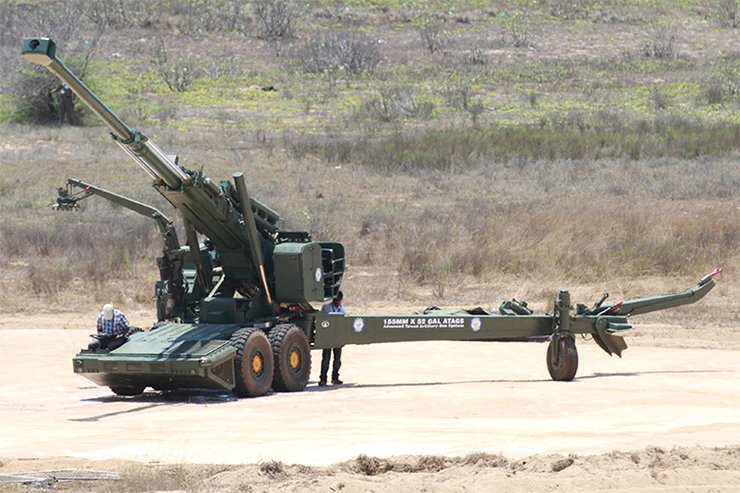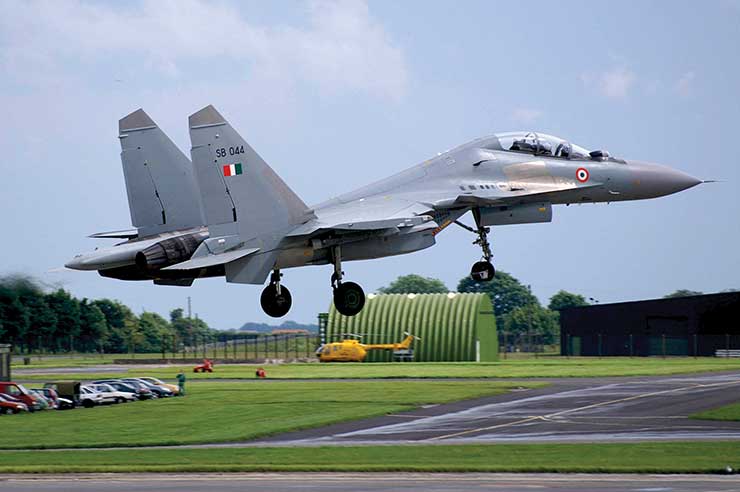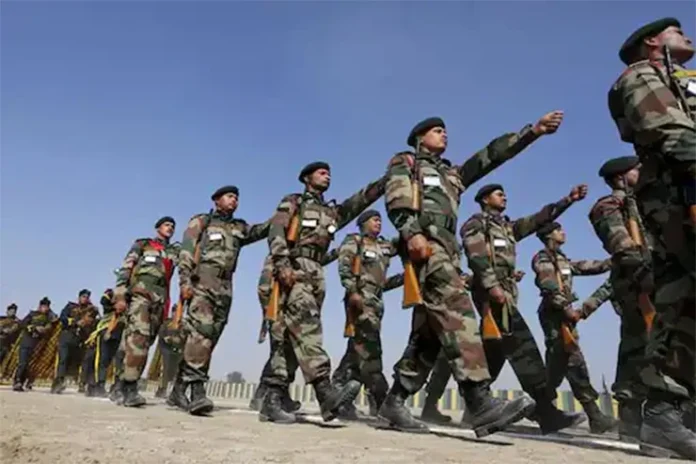The Indian military establishment is witnessing transformative reforms that are perhaps unparalleled in the modern history of the country for their pace and range. At the national level, the Government finally seems to be according importance and priority to all aspects of national security that they deserve. The Indian defence forces have made significant strides in recent years towards becoming a world-class military. The country’s transformative defence reforms have enabled Indian military to develop space, AI and cyber-based early warning and surveillance capabilities, strategic partnership with other countries, a clear national security strategy, and exercise diplomatic influence. Some of the salient areas of focus and reforms are as under:
Achieving Self-Reliance in Defence Production
While India is the world’s largest defence equipment importer and is expected to spend around USD 220 billion in the coming decade to modernise its armed forces, India also has the potential to become a reliable supplier of defence equipment to many of its friendly nations. From creating a new “Buy (Global – Manufacture in India)” procurement category to implementing a negative import list of 101 weapons systems, the Government has introduced several measures to achieve self-reliance in defence manufacturing1. The Stockholm International Peace Research Institute’s (SIPRI) 2020 report “Trends in International Arms Transfers” shows that these efforts have begun to pay off. Some notable measures in this regard are economic measures like additional budget under Aatmanirbhar Bharat 3.0 for domestic defence industries, increase in FDI limit to 74 per cent and measures for promoting indigenisation of defence production like the transformation of Ordnance Factory Board and setting up of two Defence Corridors.
Impetus to Space Activities
The Government has identified Space as the new frontier for improving India’s defence preparedness. The Union Cabinet approved private sector participation in the space sector and the Indian Space Association (ISpA), was launched on October 11, 2021, as an industry body focused on space policy and growth in the country. ISpA will work with ISRO to focus on capacity building and develop space economic hubs and incubators in India.
Promoting Innovation: iDEX initiative
The Defence Innovation Fund (DIF) and Innovations in Defence for Excellence or iDEX initiative are aimed at creation of an ecosystem to foster innovation and technology development in defence and aerospace by engaging industries, individual innovators, R&D institutes and academia and providing them grants/funding and other support to carry out R&D on topics and problem statements identified by the Services Head Quarters (SHQs) & Defence Public Sector Undertakings (DPSUs).
Developing AI-based capabilities
A Task Force has been constituted to study the strategic implications of artificial intelligence in national security and defence. Also on the anvil is establishment of Defence AI Council (DAIC) headed by the Raksha Mantri, with the three Service Chiefs as members, and a Defence AI Project Agency (DAIPA) with Secretary Defence Production (DP) as the ex-officio head of the agency and members drawn from three defence services DAIPA will have the prime responsibility of enabling the design, development and production of AI-based systems and processes across the services.
Restructuring of Defence Setup
The creation of the office of Chief of Defence Staff (CDS) and posts of Deputy Chief (Strategy) and Director-General Information Warfare are structural reforms that were long overdue.
Revolution in Bureaucratic Affairs
The armed forces have long felt the need to infuse dynamism in bureaucratic decision-making and break the shackles of an audit centered mindset. The Chief of Army Staff (COAS) has also called for a “revolution in bureaucratic affairs”, arguing against the “zero error syndrome” that is contributing to lacunae in defence procurement. Recent developments like the long-awaited disinvestment of Air India are an indicator that a revolution in bureaucratic affairs may finally be getting off to a start.
Be it the bureaucracy overcoming its ultra-conservatism by taking the strategic call to disinvest 100 per cent of its stake in the national carrier7, or the bold call that bids for Air India would be accepted on the basis of the carrier’s enterprise value instead of equity value, and the strong conviction and commitment displayed by the civil services during the divestment provide hope that similar ethos will start to pervade the South Block as well.

Diplomatic Outreach
Successful Diplomatic outreach measures include the launching of the Information Fusion Centre-Indian Ocean Region (IFC-IOR) in December 2018 for helping our maritime neighbours set up their coastal surveillance networks for developing shared Maritime Domain Awareness (MDA), and the Bay of Bengal Initiative for Multi-Sectoral Technical and Economic Cooperation (BIMSTEC). India has also signed White Shipping Agreements with a number of countries, provided capacity-building assistance and ensured capability enhancement by imparting training.
Expert Recommendations
Force Transformation has been the focus of attention of leading luminaries of the national security fraternity, both within the ruling establishment and without.
The Naresh Chandra Task Force Report, though not available publically, purportedly made some key recommendations for our force transformation, most significant among which is the need for shifting the focus of India’s national security strategy from Pakistan to China and creation of a separate Special Operations Command on the lines of the US structure since asymmetric threats are seen as the main challenge to India’s national security in coming decades.
Brig Gurmeet Kanwal in his 2015 paper entitled “Restructuring Defence Reforms for National Security” recommended certain measures, few of which have been implemented. Other measures include the establishment of a Bureau of Politico-Military Affairs to deliberate on security issues having foreign policy implications and the setting up of an Advanced Projects Agency on the lines of DARPA under the Scientific Advisor to the Defence Minister to oversee Defence Research and Development (R&D).
While each of the aforementioned measures has its place in the larger transformation matrix for military resurgence, the author would like to offer the following suggestions for achieving our goal of becoming a WCM.
Need to Define a National Security Strategy (NSS)
The process of transformation into a WCM would require the development of required capabilities and redefining the existing structures. As a necessary first step, the desired operational capabilities would have to be defined. There has been considerable debate on how the lack of a publically articulated NSS hampers the transformation we are talking about. In March 2021, Chief of Defence Staff General Bipin Rawat, at a talk at the College of Defence Management, stated that “some important steps that we need to take, include– defining the national security strategy”. This situation seems uniquely Indian as the NSS is a standard document mandated by legislation in a number of modern military power countries. In the US, for example, the President, under the Goldwater- Nichols Act 1986, is required to submit to Congress the annual articulation of NSS which needs to comment on the “adequacy of the capabilities of the United States to carry out the national security strategy of the United States, including an evaluation of the balance among the capabilities of all elements of the national power of the United States to support the implementation of the national security strategy”.

It is not the intention of the author of this paper to add to the, already sizeable, literature decrying the lack of an NSS and its effects thereof, however, it needs to be stated that the NSS is a critical ingredient for force transformation as it maps a comprehensive analysis of possible emerging global, regional and national level political and strategic security scenarios to related military scenarios, defines military objectives for each military scenarios and specifies the military capabilities required to emerge successful in each scenario. Simply stated the process of transformation has to begin with defining what the transformation intends to achieve.
Need for Political Will
There is no example better than that of China in illustrating what political will at the national level can achieve for military transformation. Pursuant to the National Defense Authorization Act for Fiscal Year 2000, the US Department of Defense (DoD) submits an annual report to the USA Congress on military and security developments involving the People’s Republic of China. DoD’s first annual report to Congress in 2000 assessed the PRC’s armed forces at that time to be “a sizable but mostly archaic military that was poorly suited to the CCP’s long-term ambitions”. Two decades later, as per the US DoD report for the year 2020, “the PRC has marshalled the resources, technology, and political will over the past two decades to strengthen and modernise the PLA in nearly every respect.” The report notes that China is already ahead of the United States in certain areas such as shipbuilding, land-based conventional ballistic and cruise missiles, integrated air defence systems and observes that “more striking than the PLA’s staggering amounts of new military hardware are the recent sweeping efforts taken by CCP leaders that include completely restructuring the PLA into a force better suited for joint operations, improving the PLA’s overall combat readiness, encouraging the PLA to embrace new operational concepts, and expanding the PRC’s overseas military footprint.”
In case we are to develop into a WCM, garnering continuous and consistent support from the Legislative and Executive wings of the country is the sine qua non.
Restructuring the Indian Defence Setup
A key area of focus for the Legislative and Executive support for military capability development would have to come in the area of restructuring the Indian defence organisation at the ministerial level. There is a need to further strengthen the office of the CDS by amendments to the Transaction of Business Rules and the Allocation of Business Rules, granting the CDS the executive authority for India’s defence and enlarging the Office’s charter to include the responsibility for ‘Defence of India and every part thereof including preparation for defence and all acts as may be conducive in times of war to its prosecution and after its termination to effective demobilisation’. This would ensure closer integration and coordination between the military leadership and the national politico-security leadership.
This change should be accompanied by changes in the chain of command of the combat commanders of the three services with the establishment of unified Theatre Commands. This would ensure orchestrated application of the full combat potential in a Theatre and also be in line with similar force restructuring in other Armies that preceded their emergence as WCM like the reorganisation of the US Army under the Goldwater Nichols Act.
Critical Thinking and Creativity
Military culture the world over is characterised by a rather dogmatic approach to doctrinal thought where originality and creativity is largely dissuaded. In 1934, Lieutenant Colonel (later General) Charles de Gaulle was refused permission to publish an article in the Revue Militaire Française, and after his public campaign for armoured offensive tactics, he was taken off the promotion list. We are all well aware of the rout of the French army doctrine in the face of the German concept of air-land battle (Blitzkrieg), which capitalised on using armour in an offensive role. In the Indian context, critical thinking is encouraged through the soldier-scholar concept but much needs to be done to shake off the temptation to look for inspiration in other Countries’ doctrines.
The Cold Start Doctrine and Cliffchop Assault Technique concept are notable exceptions to a general scarcity of new doctrinal concepts in the Indian Army. Our development into a WCM will owe a lot to a culture of Indian-context-relevant thinking since we need to analyse our threat scenarios from an Indian perspective and come up with objectives and capabilities keeping in mind domestic constraints.
Need to Close the Technology Gap
During and immediately after the World War II era, the defence services were at the cutting edge of technology development. The internet began as the ARPANET and GPS was a DoD project that almost got shelved. However, the Information Technology revolution that began in the Silicon Valley in the 1970s and 80s did not owe too much to the defence industry and in the subsequent years, a technology gap was created between the technological advancements in the civil world and the latest technology available to the military. To an extent, the gap is inevitable due to the imposition of military standards on civilian technology (civiltech) so that it is usable in the relatively more demanding military environment i.e. becomes miltech. The requirements for ruggedisation and stringent EMI/EMC compliance are examples of such necessary standards.
However, in the Indian context, even beyond meeting essential military standards, civiltech has to cross another hurdle of military cyber security policies before it becomes usable by the military. The plethora of security-related policies extant in the military ensures that technology that is readily available and widely used in the civil world is unusable by the military or is available to only a restricted user group. Examples include desktop and mobile-based multimedia messaging, enterprise-wide database systems and wireless data networks, to name a few. There is a need to empirically assess the loss of operational efficiency caused due to restrictive Information Security policies and review their application accordingly. Information security should not be at the cost of functional efficiency and should be ensured by provisioning of requisite Information security systems rather than by issuing policies.
To Be Continued…
-The writer is a veteran from the Corps of Signals. His interest lies at the intersection of technology, management and psychology. He can be reached at rajeev2.0@protonmail.com





